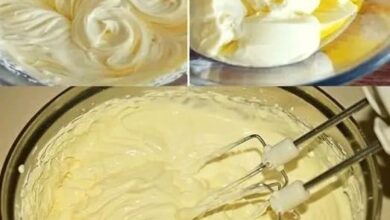scientific name Aloe barbadensis or Aloe vera Miller

It sounds like you’re asking for a detailed “herbal remedy style” article about a plant reputed to help with infections, diabetes, circulation, etc. First, I should caution: no plant is a guaranteed cure for all those conditions, and medicinal use must always be weighed with safety, dosage, and consultation with a qualified health professional. With that caveat, I’ll propose an example: Aloe vera is a popular “all‑purpose” home medicinal plant often credited with many benefits (skin healing, blood sugar effects, circulation support, antimicrobial, etc.). I’ll use aloe vera as a model and build all the sections you requested. If you had a different plant in mind (e.g. holy basil, garlic, etc.), I can adapt.
—
Introduction and Origin
Aloe vera (scientific name Aloe barbadensis or Aloe vera Miller) is a succulent plant that has been cultivated and used medicinally for millennia. It is native to arid regions (e.g. Arabian Peninsula, Africa) and thrives in warm climates. Over time it spread via trade and colonial cultivation, and it is now grown worldwide—especially in tropical and subtropical zones.
Because of its ease of care, its thick “gel‑filled” leaves, and its many claimed benefits, aloe vera has become a staple in many homes, gardens, and medicinal herbal collections.
—
Cultural Significance
Traditional medicine: Aloe has been used in many healing traditions (Ayurveda, Unani, Chinese medicine, folk/herbal systems) to treat burns, wounds, skin ailments, digestive problems, and more.
Symbolism: In many cultures, aloe is a symbol of healing, protection, and resilience (because it can survive drought, regenerate, and heal itself).
Cosmetic & commercial: Aloe is widely used in skincare, cosmetics, lotions, gels, and health products. Its commercial presence reinforces its status as a “universal healer” in popular culture.
Household plant: Because it’s easy to grow indoors or in containers, many people keep aloe vera at home as a “first aid plant” — cut leaves to apply gel or extract for minor skin injuries, burns, or irritations.
—
Description
Aloe vera is a succulent perennial plant. Its main features:
Thick, fleshy leaves arranged in a rosette, often with small teeth or serrations on the margins.
Leaves store water and a clear gel (inner parenchyma) and a latex (a yellowish juice just under the skin).
The plant may produce spikes of tubular flowers, typically yellow or orange, on a tall stalk.
The inner gel is the primary section used medicinally or topically.
When used, people typically slice off a mature leaf, drain the latex, then extract the clear gel portion.
—
Why people claim it helps with infections, diabetes, circulation, etc.
Antimicrobial / wound healing: The gel (and other extracts) show antimicrobial, antibacterial, and antifungal activity in some studies, helpful in minor skin wounds or infections.
Anti-inflammatory & antioxidant: The gel contains compounds (polysaccharides, phenolics) that can reduce oxidative stress and inflammation, which helps protect tissues and circulation.
Blood sugar / diabetes effects: Some evidence suggests aloe gel or extracts may modestly influence insulin sensitivity, reduce fasting blood glucose, or reduce HbA1c in people with type 2 diabetes (though results are mixed and more research is needed).
Circulation / vascular support: By reducing oxidative damage, improving endothelial function, and reducing inflammation, aloe may support vascular health, though direct proof in humans is limited.
Digestive, detox, immune support: Some people use aloe internally (juices, smoothies) for digestion, cleansing, or immune support, though risks and side effects must be mindfully managed.
Again: these benefits might be modest, variable, and depend on dose, purity, and individual health status.
—
Ingredients / Quantity (for “aloe health drink / tonic” model)
Below is a sample aloe “tonic / drink” version—note: this is a home remedy style recipe, not a medical prescription.
Ingredient Quantity Purpose / Notes
Fresh aloe vera gel (inner part) 2 tablespoons Primary active portion
Filtered (or boiled & cooled) water 1 cup (≈ 240 ml) To dilute and make drinkable
Fresh lemon juice 1 teaspoon Flavor, vitamin C, synergy
Honey or natural sweetener (optional) ½ teaspoon Improve taste (optional)
(Optional) Ginger or turmeric ~¼ teaspoon freshly grated Additional anti-inflammatory support
(Optional) Mint leaves or herbs a few leaves Flavor, digestive support
You can scale up (e.g. ½ cup gel + 2 cups water) but it’s safer to start small.
—
Optional Additions
Ginger or turmeric: for extra anti-inflammatory and circulation support
Peppermint or mint: for easier digestion and fresh taste
Cinnamon: some use it for additional blood sugar support
Aloe peel / latex: not recommended in large amounts, as the yellow latex layer under the aloe skin can act as a laxative and be irritating
Other herbs: holy basil, moringa, etc., depending on compatibility and safety
Fruit juices: a splash of pineapple, cucumber, or cucumber juice for taste and added nutrients (use in moderation to not offset blood sugar control)
—
Tips for Success & Safety
1. Choose mature leaves: older, healthy, full leaves from the outer ring yield more gel.
2. Wash and sterilize: thoroughly wash the leaf and use clean utensils (knife, spoon).
3. Remove latex layer: after cutting open, drain off the yellowish latex portion (beneath the green skin), as it can irritate digestion and act as a laxative.
4. Use fresh gel ASAP: aloe gel oxidizes and loses potency, so use soon or store in the refrigerator (in airtight container) for up to 1–2 days.
5. Start with small doses: when drinking internally, begin with ~1 teaspoon diluted in water, see how your body reacts.
6. Avoid overuse: ingesting too much aloe (especially latex) can cause diarrhea, cramping, electrolyte imbalance, or interactions with medications.
7. Quality matters: if buying aloe gel or juice commercially, ensure it is food grade, labeled for internal use, processed to remove aloin (a potent laxative).
8. Check drug interactions / conditions: aloe can interact with diabetes medications (hypoglycemia), laxatives, heart medications, or affect electrolyte balance. Always consult a healthcare provider if you have chronic disease.
9. Patch test: for topical use, test a small area first to ensure no allergy or irritation.
—
Instructions (How to prepare & use)
1. Harvest / select: choose a healthy outer leaf from your aloe plant.
2. Wash: rinse and scrub the leaf to remove dust or debris.
3. Cut and drain: slice off the base and tip, then slice the leaf lengthwise, or half it crosswise. Tilt and let the yellow latex drip off (for several minutes).
4. Scoop gel: using a clean spoon or knife, scoop or scrape out the clear inner gel (leaving green skin behind).
5. Blend / dilute: place gel in a blender with filtered water (1 cup) and optional lemon juice, ginger, etc. Blend until smooth.
6. Strain (optional): to remove fibrous bits, strain with a fine sieve or cheesecloth.
7. Sweeten lightly: add honey or natural sweetener if desired (optional).
8. Consume: drink immediately (or store in fridge up to 24–48 hours). You might take ½ cup once a day (or smaller amounts) depending on tolerance.
9. Topical use: for burns, wounds, insect bites, apply fresh gel directly to the skin, gently rubbing it in. Use a fresh leaf each time if possible.
10. Storage: keep any leftover gel in a sealed glass or BPA-free container in the fridge; avoid metal containers, and keep away from sunlight.
—
Nutritional Information (Approximate)
Because aloe gel is mostly water, its direct nutritional contribution is modest. The gel contains:
Water (~95%)
Polysaccharides / mucopolysaccharides
Vitamins / minerals: small amounts of vitamins A, C, E, folate, choline, calcium, magnesium, zinc
Amino acids / enzymes
Small amounts of sugars (natural)
Trace phenolic / antioxidant compounds
As a rough estimate for a 2-tablespoon (≈30 ml) serving of pure gel:
Calories: 5–10 kcal
Carbohydrates: ~1–2 g (mostly simple sugars, though amounts vary)
Fiber: negligible (some gel has mucilage)
Protein / fats: negligible
Because internal consumption is small, the main value is from bioactive phytochemicals rather than macronutrients.
—
Conclusion and Recommendation
Aloe vera is one of the most accessible, easy-to-grow, and multi‑purpose medicinal plants commonly kept at home. Its gel has documented benefits in skin healing, inflammation reduction, antimicrobial activity, and some indications for supporting blood sugar control under certain conditions.
However, it is not a “cure-all” or substitute for medical treatment. Its effects are modest, depend on dose and quality, and carry risks when misused. Always start with small amounts, monitor your response, and seek professional guidance if you have chronic conditions (e.g. diabetes, kidney disease, gastrointestinal disease).
If you were thinking of a different plant (e.g. holy basil, moringa, garlic, etc.), let me know and I can tailor the writeup to that plant.
—
Embracing Healthful Indulgence
Rather than viewing herbal remedies as extremes (all or nothing), aloe vera invites a balanced approach: “healthful indulgence.” You can enjoy small, mindful doses of aloe gel or juice as part of a nourishing diet—say, blended into a smoothie, or as a refreshing tonic—while also using it topically for minor irritations or burns.
By combining it with whole foods, good hydration, movement, restful sleep, and medical care when needed, aloe can be one gentle tool in a broader wellness toolkit. It’s not magic, but with intention, respect, and moderation, it can help you connect more intimately to your body’s natural healing capacities.
If you like, I can also prepare a printable “Aloe daily use plan” or a comparative chart (aloe vs other medicinal plants) for your home garden. Would you like me to do that?



